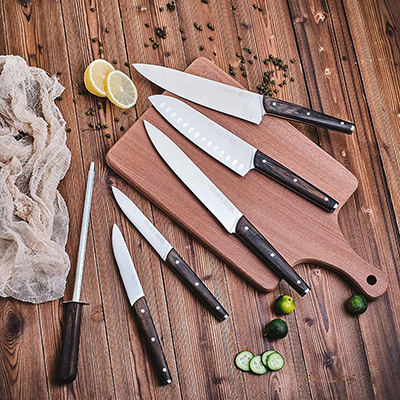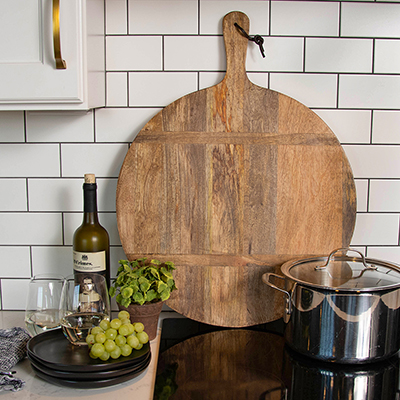Best Mandoline Slicers for Your Kitchen

Last updated August 21, 2024
What is a mandoline slicer? A mandoline or mandolin slicer is a type of kitchenware designed to create extremely thin cuts and specialty shapes without chopping. The best mandoline slicer for your kitchen can be used for slicing vegetables, fruit and even cheese in a variety of ways that can liven up meals and snacks.
This guide will help you understand the best mandoline slicers for your kitchen, so you can select which is right for you.
Safety Tip: A mandoline slicer can be a very sharp kitchen tool, so use a safety guard and take all precautions when using and cleaning.
Table of Contents
How to Use a Mandoline Slicer
Handheld Mandoline Slicers
Stand-Model Mandoline Slicers
Mandoline Slicer Blades
Types of Mandoline Slicer Cuts
Washing a Mandoline Slicer
How to Use a Mandoline Slicer
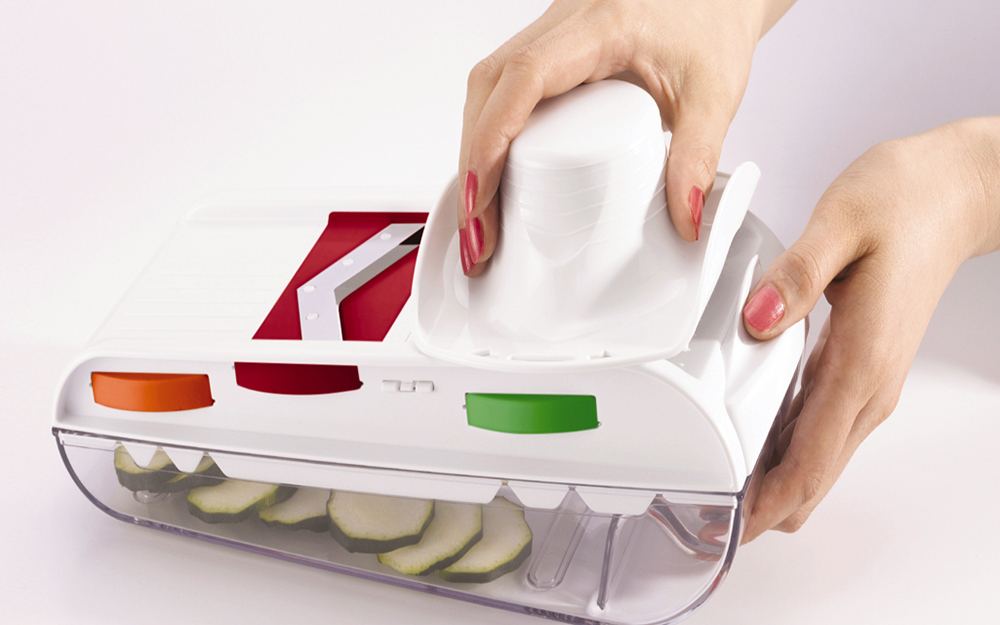
Before using a mandoline slicer, read the manufacturer’s instructions, as different models may have design differences.
- Cut the food item to be sliced so it has a flat surface on one or both sides – the flatter the surface, the better the slice.
- Attach the food to the accompanying hand guard (also called a food holder or hand pusher). If a hand guard is unavailable, wear cut-resistant gloves.
- Place the slicer perpendicular to you on a table or kitchen counter for better control of the movement.
- Use the knob or lever on the side to set the thickness of the slices, as needed.
- Glide the flat side of the food across the blade using even strokes and consistent pressure.
- Clean the slicer immediately after use to prevent food residue from drying to the parts.
Handheld Mandoline Slicers

A handheld mandoline slicer is a flat utensil with a handle and is often designed so the base can rest against a counter or bowl. The user can tilt the utensil to control the slicing angle. A handheld slicer can be easier to use over a bowl or cutting board.
Stand-Model Mandoline Slicers
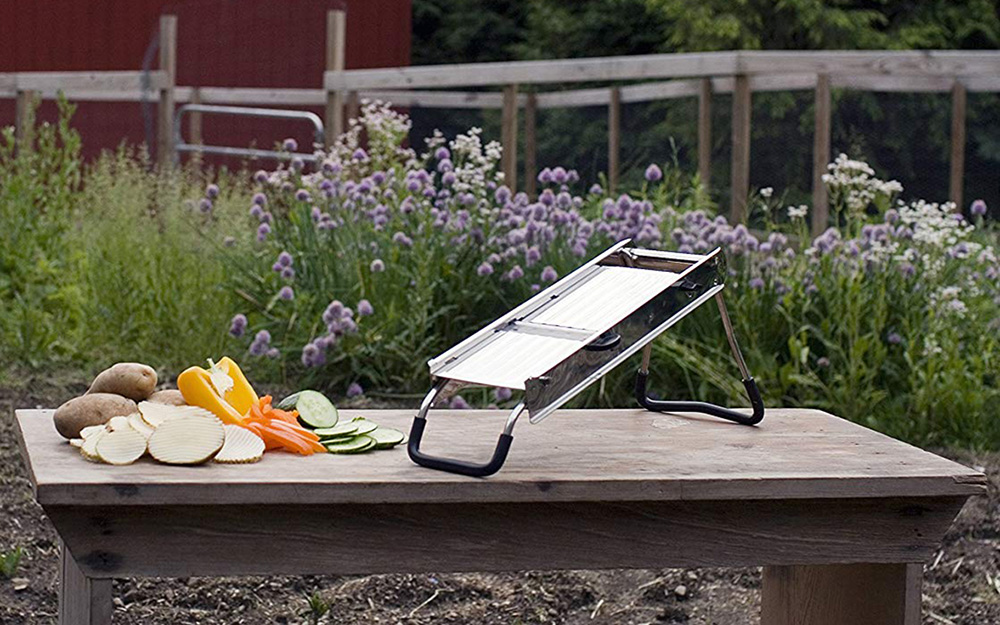
Stand-model mandoline slicers are designed to be raised on built-in legs and can subsequently feel more firmly held in place, so users needn’t focus on whether the slicer is secure. Some are built to leave room for bowls underneath.
Mandoline Slicer Blades
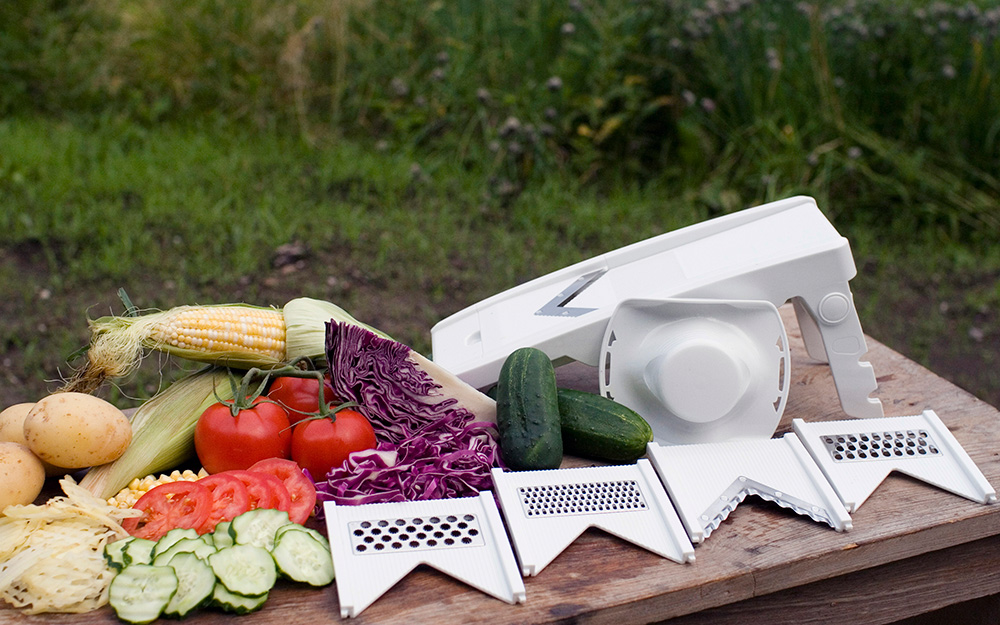
A mandoline food slicer may have one of three types of slicing blades:
- A single blade is installed perpendicular to the ramp. This traditional design tends to be effective for tough vegetables such as carrots, but more likely to crush soft fruits or vegetables such as tomatoes.
- A diagonal blade is designed to puncture a small part of the produce’s skin before gliding through the rest of it, making it more effective for tomatoes, peppers and similar items. Using this can allow tough vegetables to be cut with less force, which can improve safety.
- A v-shaped blade features two matching diagonal blades so that the direction of the slices go towards the point of the “v.” This is the most prevalent blade style in contemporary mandoline slicers.
Types of Mandoline Slicer Cuts
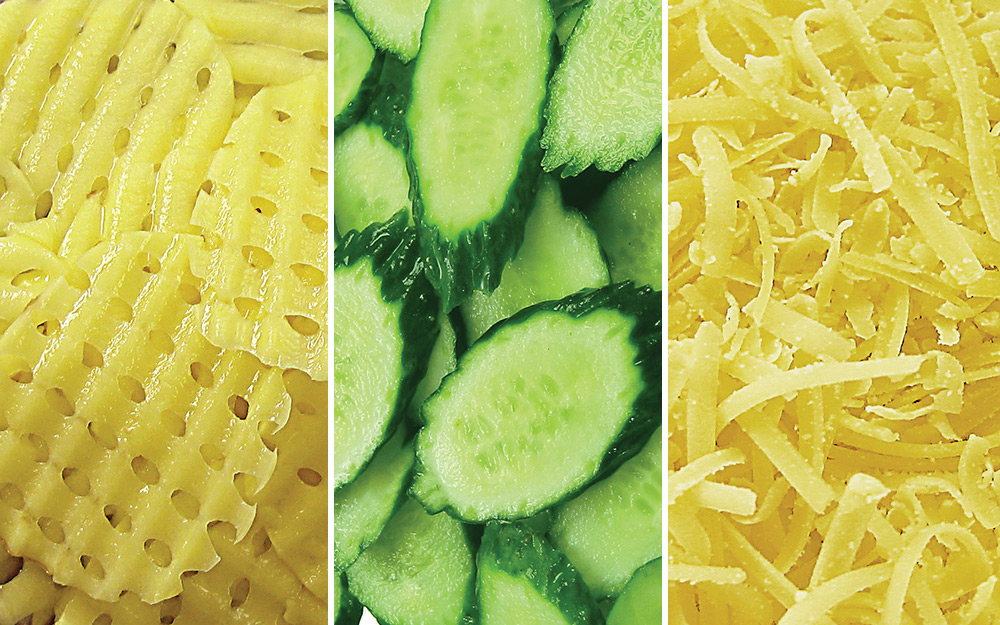
Mandoline slicers typically have blades that can be adjusted or replaced with different attachments to create different styles of cuts on fruits and vegetables. When choosing the best mandoline for your home, make sure it provides the cut options you want to use in food preparation. These cuts tend to be the most popular:
- Slice: The traditional cut of a mandoline slicer, usually ranging from about 1/2-inch thick to nearly paper thin.
- Crinkle: This cut creates pieces of food with wavy or corrugated edges and are best known in crinkle-cut French fries.
- Waffle: The grooved edges of this cut are made by cutting food with the crinkle attachment, turning the item 90 degrees and cutting again.
- Julienne: Originally a French term, this refers to food cut into long, thin strips (usually no more than 1/8-inch square).
- Matchstick: This variation on a julienne cut tends to be thinner and shorter, reminiscent of matchsticks.
Washing a Mandoline Slicer
- A mandoline slicer should be washed after use to prevent food-related build-up or contamination.
- When cleaning by hand, wash with mild soap and warm water, wiping the blades against the direction of the sharp edge to avoid cuts. Rinse off the soap after washing and dry with a towel, or allow to air dry.
- Some plastic or stainless steel mandoline slicers are dishwasher safe. Follow manufacturer’s instructions, as some models may be partially disassembled before washing. Make sure the blade does not contact any glassware or other items in the dishwasher.
- No matter which method you use to clean the slicer, make sure it is completely dry before storage.
Special Features
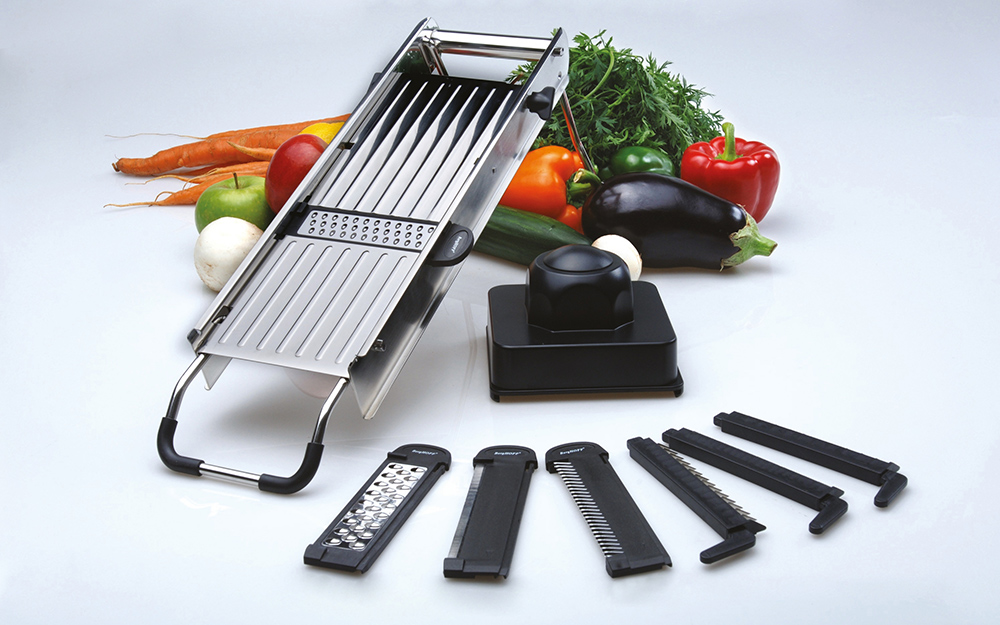
Some models of mandoline slicers have special features to make cooking easier.
- Removable blades for sharpening or replacement.
- Wide ramp to accommodable bigger types of produce such as large potatoes or eggplant.
- Anti-skid feet to keep the slicer securely in place.
- Bowl to fit under the unit to collect sliced food.
- Grating blades that can be swapped out for the mandoline blades.
- Built-in measuring guide to show how deep the cut will be.
The mandoline slicer takes its name from the mandolin musical instrument and how the motion of playing one resembles the motion of using the slicer. Of the different types of kitchen gadgets and tools, the best mandoline slicers provide an alternate to a chef's knife to make potato chips, French fries and other delectables with ease. If you're looking for a mandoline slicer to help you get the most out of your cooking time, use The Home Depot Mobile App to find what you need.





